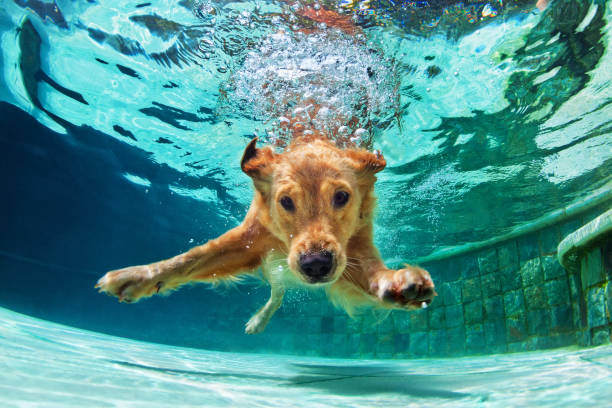As the weather warms up, many dog parents look forward to spending time by the water with their furry friends. Swimming can be a fantastic way for dogs to cool off, exercise, and have fun. However, it's crucial to ensure that swimming is safe and enjoyable for your canine companion. This blog post will cover essential safe swimming practices for dogs, helping you prepare for a summer filled with water adventures.
The Benefits of Swimming for Dogs

Before diving into safety tips, let's explore the benefits of swimming for dogs:
- Great Exercise: Swimming provides a full-body workout that helps build muscle, improve cardiovascular health, and increase stamina.
- Low-Impact Activity: Swimming is gentle on the joints, making it an excellent exercise option for dogs with arthritis or mobility issues.
- Mental Stimulation: Swimming can be mentally stimulating and reduce boredom, helping to keep your dog happy and content.
- Cooling Off: On hot days, swimming is a perfect way for dogs to cool down and prevent overheating.
Preparing Your Dog for Swimming

1. Assess Your Dog’s Swimming Ability:
- Not All Dogs Swim Naturally: While some breeds, like Labrador Retrievers and Newfoundlands, are natural swimmers, others may need more encouragement and training. Introduce your dog to water gradually, starting with shallow areas and moving to deeper water as they become more confident.
- Monitor Comfort Levels: Watch for signs of stress or discomfort. If your dog seems anxious, take a step back and try again later. Never force your dog into the water.
2. Invest in a Canine Life Jacket:
- Safety First: A life jacket is essential, especially for dogs new to swimming, small breeds, or those with health issues. Choose a well-fitted life jacket with a handle on the back for easy lifting.
- Practice Wearing It: Let your dog wear the life jacket on dry land to get used to it before hitting the water.
Safe Swimming Locations

1. Choose Dog-Friendly Spots:
- Designated Dog Beaches: Look for beaches or lakes with designated dog areas where swimming is allowed. These areas are typically safer and more enjoyable for dogs.
- Clean Water: Ensure the water is clean and free from harmful bacteria, algae, and debris. Avoid stagnant water and check for local advisories on water quality.
2. Avoid Strong Currents and Deep Water:
- Calm Waters: Choose areas with calm waters, avoiding strong currents, waves, and deep sections. Rivers and ocean currents can be dangerous, even for strong swimmers.
- Supervised Areas: Select swimming spots where you can keep a close eye on your dog and intervene if necessary.
Swimming Safety Tips

1. Supervise at All Times:
- Constant Vigilance: Never leave your dog unattended in the water. Keep an eye on their movements and be ready to assist if they get tired or distressed.
- Stay Close: Stay within arm’s reach, especially if your dog is a beginner swimmer.
2. Teach Exit Strategies:
- Easy Exits: Ensure your dog knows how to exit the water safely. Practice finding and using designated exit points like ramps or steps.
- Avoid Slippery Surfaces: Be cautious of slippery surfaces that can cause your dog to slip and fall.
3. Watch for Signs of Fatigue:
- Regular Breaks: Give your dog regular breaks to rest and hydrate. Swimming can be tiring, and even strong swimmers can tire quickly.
- Signs of Tiredness: Look for signs of fatigue, such as slow movements, heavy panting, and struggling to keep their head above water.
4. Rinse Off After Swimming:
- Clean Water: Rinse your dog with fresh water after swimming in pools, lakes, or the ocean to remove chlorine, salt, and any potential contaminants.
- Dry Thoroughly: Dry your dog thoroughly to prevent skin irritations and infections, particularly in their ears and paws.
Additional Considerations

1. Be Aware of Temperature:
- Cold Water Risks: Avoid swimming in cold water, which can lead to hypothermia. Ensure the water temperature is comfortable for your dog.
- Hot Weather Precautions: On hot days, ensure your dog has access to shade and fresh water. Avoid swimming during the hottest parts of the day.
2. Health Check-Ups:
- Vet Visits: Before starting any new exercise routine, including swimming, consult your veterinarian to ensure your dog is healthy and fit for the activity.
- Vaccinations and Treatments: Keep your dog’s vaccinations and flea/tick treatments up to date, especially if swimming in natural bodies of water.
Swimming can be a fun and beneficial activity for dogs, providing exercise, mental stimulation, and relief from the heat. By following these safe swimming practices, you can ensure that your canine companion enjoys their time in the water while staying safe and healthy. Remember to assess your dog’s swimming ability, choose safe locations, supervise closely, and be prepared for emergencies. With these precautions in place, you and your dog can look forward to many enjoyable and safe water adventures.
Subscribe to the Gingr Blog






